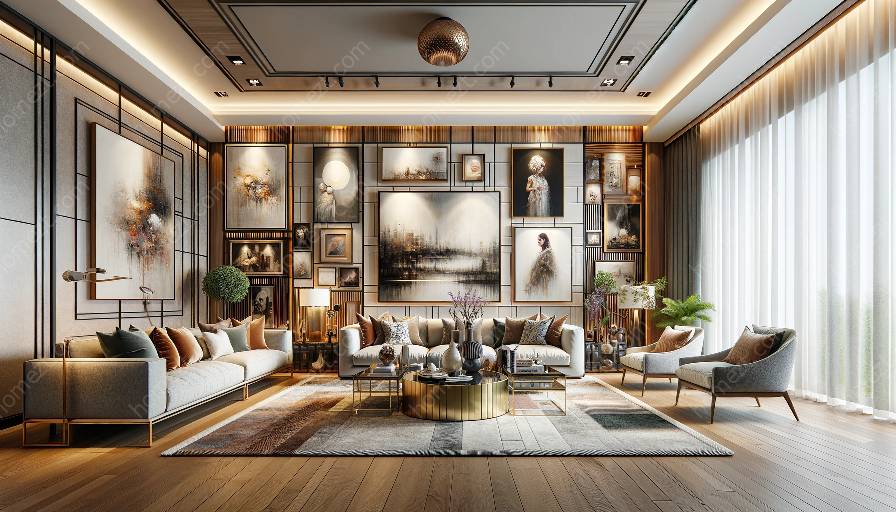Interior design is the art and science of enhancing the interior of a space to achieve a healthier and more aesthetically pleasing environment for the people using that space. It involves creating a cohesive and functional design that reflects the client's needs and personality. The basic principles of interior design serve as a foundation for creating well-designed spaces that are visually appealing and efficient.
The Basic Principles of Interior Design
1. Balance: Balance in design is achieved through the equal distribution of visual weight in a room. There are three types of balance: symmetrical, asymmetrical, and radial. Symmetrical balance is achieved by arranging elements on either side of the centerline in an equal manner. Asymmetrical balance involves the use of different objects that have equal visual weight, while radial balance is achieved by arranging elements around a central point.
2. Harmony: Harmony in interior design refers to the coordination and unity of various elements and features to create a visually pleasing composition. It involves using elements that complement each other to create a cohesive and balanced design.
3. Emphasis: Also known as focal point, emphasis is about creating a point of interest in a room. It could be a piece of art, a unique piece of furniture, or an architectural feature that draws attention and adds visual interest to the space.
4. Scale and Proportion: Scale and proportion refer to the size and visual weight of objects in a space. It is important to maintain a balance between the sizes of different elements to create a harmonious and appealing design.
5. Rhythm: Rhythm in interior design involves the repetition of elements to create a sense of movement and visual interest. It can be achieved through the use of patterns, colors, or textures to create a cohesive and dynamic space.
These principles provide a framework for creating well-designed interiors that are not only visually appealing but also functional and comfortable. Now, let's explore how to incorporate art and decorating into interior design to enhance the overall aesthetic of a space.
Decorating with Art
Art plays a crucial role in interior design by adding personality, visual interest, and a sense of culture to a space. Whether it's a painting, sculpture, or any other form of art, it can be used to evoke emotions, express individuality, and enhance the overall ambiance of a room. Here are some tips for incorporating art into interior design:
- Choose Art That Resonates: When selecting art for a space, consider pieces that resonate with the overall theme, color palette, and mood of the room. The art should complement the existing elements and add a sense of harmony to the space.
- Highlight Focal Points: Use art to create focal points within a room. A striking piece of art can serve as a focal point and draw attention, anchoring the design and guiding the viewer's gaze.
- Experiment with Placement: Be creative with the placement of art. Consider unconventional locations such as above a doorway, on a ceiling, or even leaning against a wall. Experimenting with placement can add a sense of intrigue and uniqueness to the space.
- Consider Scale and Proportion: When hanging or displaying art, consider the scale and proportion in relation to the surrounding elements. The art should not overwhelm or get overshadowed by the other elements in the room.
- Use Art to Tell a Story: Art can be used to narrate a story or convey a theme within a space. Consider creating an art gallery wall that showcases a collection of pieces that collectively tell a story or evoke a particular emotion.
The integration of art into interior design adds a layer of sophistication and personalization to a space, elevating its overall aesthetic and ambiance. However, art alone cannot completely transform a space; it needs to be intertwined with a thoughtful approach to decorating.
Decorating in Interior Design
Decorating in interior design involves the selection and arrangement of furniture, accessories, color schemes, and textures to create a harmonious and functional living environment. By incorporating decorating principles with the basic principles of interior design, a space can be transformed into a visually appealing and personalized sanctuary. Here are some fundamental aspects of decorating to consider:
- Color Scheme: Choose a cohesive color palette that reflects the mood and purpose of the space. Consider the psychological effects of colors and their impact on the overall ambiance.
- Furniture Arrangement: Arrange furniture to create a functional and inviting layout that facilitates flow and movement within the space. Consider the focal points and traffic patterns within the room.
- Texture and Patterns: Incorporate various textures and patterns to add depth and visual interest to the design. Textures can range from soft fabrics to rough surfaces, while patterns can add a dynamic element to the space.
- Accessories and Décor: Select accessories and décor that complement the overall theme and style of the space. These can include rugs, throw pillows, lighting fixtures, and other decorative elements that enhance the ambiance.
- Lighting: Consider the use of natural and artificial lighting to create different moods within a space. Proper lighting can highlight art, architectural features, and other design elements.
By integrating these decorating principles with the basic principles of interior design, a well-balanced and visually appealing space can be achieved. Remember that both art and decorating should be thoughtfully incorporated to enhance the overall functionality and aesthetics of a room.






































